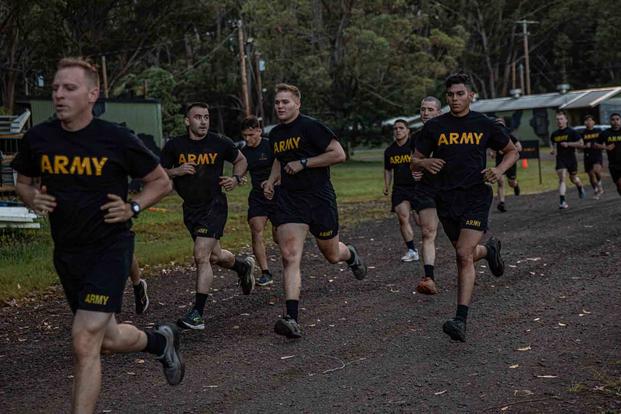It's official -- the Army will now assess body fat using a tape measurement around the waist only.
The service announced Monday it has simplified one of the key ways it judges soldier physical fitness following a broader overhaul of the Army Combat Fitness Test, or ACFT. Previously, men were measured at their neck and abdomen, while women were also measured at the hips.
Army leaders hope the new way of measuring whether a soldier is overweight is fairer and more accurate than the old tape test. Soldiers can appeal a measurement they feel is inaccurate, and they can also test out of the measurement entirely by demonstrating fitness with a high score on the ACFT.
Read Next: Funds for Building Space Command Headquarters Halted in Proposed House Defense Bill
For decades, the service has used what is broadly seen as outdated and inaccurate methods of measuring whether a soldier is overweight. Roughly 10% of soldiers are considered overweight, according to service data.
That is far below the national average but still a troubling figure for the service, given the physical demands of Army jobs. Large amounts of body fat cannot only make a soldier too unfit to fight but also cause massive spikes in the long-term risk of injury and illness.
An internal study from that past year of 2,690 soldiers found the old tape test to be a flawed way to measure body fat: 35% of tape tests were deemed inaccurate.
However, those errors were almost exclusively in favor of the soldier, showing them having far less body fat than they actually did, meaning some soldiers were out of compliance but official tests were not catching it.
Only about 1% of soldiers were inaccurately found to be overweight, according to Army data reviewed by Military.com.
The new one-site measurement is expected to increase accuracy by about 10% and will likely be less forgiving for the soldier. Those who fail that one-site tape test can opt to be retested with the old, less accurate method, but only for the next year.
Army planners looked into using body scanners, which are the industry standard in professional athletics and health care. Those scans are far more accurate than using tape measures and found soldiers on average had 8% more body fat than the old tape test measured. That can be the difference between having a healthy body weight and being severely overweight.
Yet the scanners range in price from $15,000 to $100,000, which was considered too expensive to issue across the service, and the devices were deemed not practical in many situations outside of a garrison environment.
The changes to the tape test come as the service has overhauled fitness. Last year, it fully adopted the ACFT. That test is considered a significantly better measurement of a soldier's athletic ability than the previous test, which measured only running, push-ups and sit-ups.
The ACFT is a six-event test including hand-release push-ups; a plank; a timed two-mile run; an event in which soldiers yeet a 10-pound ball as far as they can; a three-repetition maximum deadlift; and an event where soldiers sprint back and forth, switching between a 90-pound sled and 40-pound kettlebell. That new measurement for fitness is broadly seen as easier to pass than the previous test, but much more difficult to earn a high score that can be critical for promotions and job opportunities in the service.
Soldiers who score a 540 on the ACFT -- it has a max score of 600 -- with a minimum score of 80 in each of six tested events are exempt from having their body fat measured, according to the Army and top leaders.
"We want well-balanced soldiers," Sergeant Major of the Army Michael Grinston said at a public town hall in March. "We didn't want people to game it so you'd be really strong in one area, but you wouldn't be well-rounded in fitness overall."
There have been some concerns throughout the force that certain body types, particularly muscular women, are unfairly found out of compliance with body standards. The policy concludes that soldiers who achieve the 540 score are effectively guaranteed to be in phenomenal shape, having proven they can deadlift far more than their own body weight and run a relatively swift two miles.
-- Adrian Bonenberger, an Army veteran and graduate of the Columbia University Graduate School of Journalism, reports for Military.com. You can reach him at Adrian.bonenberger@monster.com.
-- Steve Beynon can be reached at Steve.Beynon@military.com. Follow him on Twitter @StevenBeynon.












